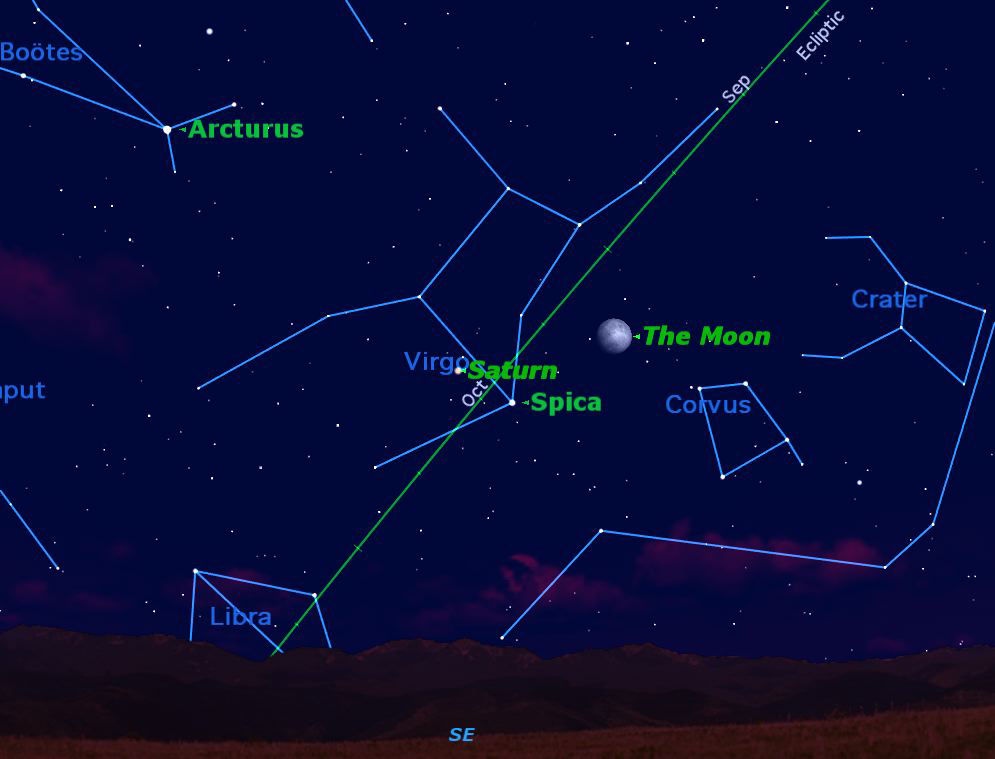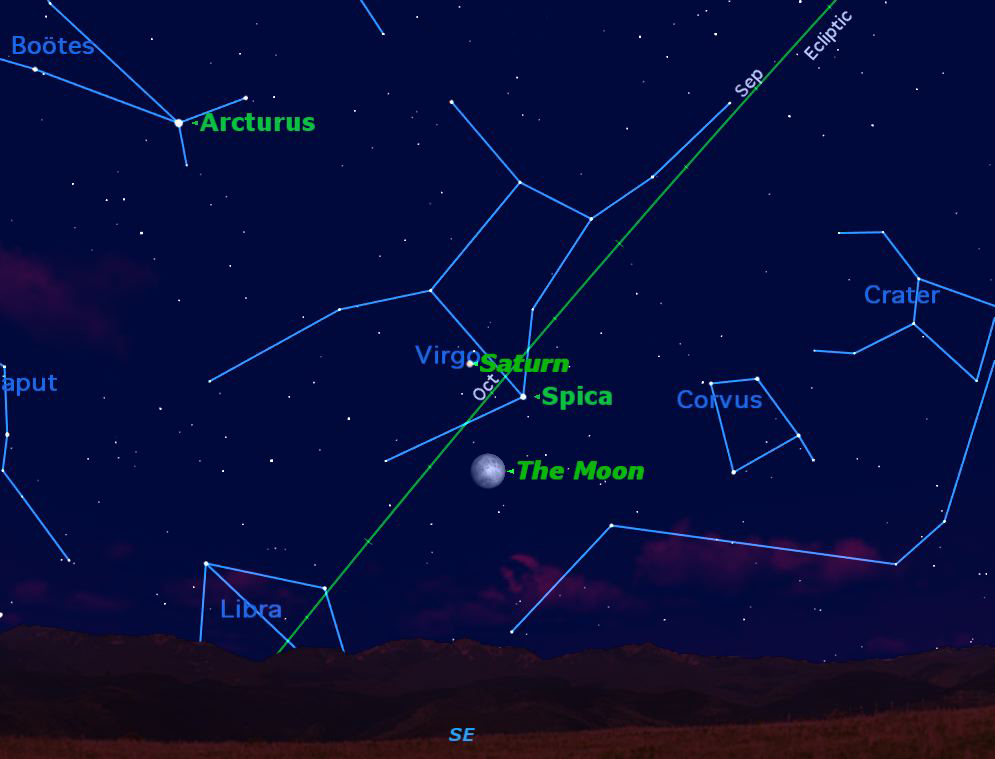Saturn, Moon and Star Offer Triple Night Sky Treat Thursday

Look toward the southeast on Thursday night (May 3) about an hour after sunset, and you will behold a rare and beautiful sight, a triple conjunction of the moon, the planet Saturn, and the bright star Spica.
A conjunction occurs when two or more astronomical objects are close together in the sky. In reality they are far apart in space; their closeness is just an effect of perspective. In astrology such close encounters are supposed to cause serious effects, but astronomers know that conjunctions are nothing more than a beautiful sight and a photo opportunity.
Because Saturn is the farthest planet from the sun visible to the naked eye, its movements in our sky are very slow. It has been in the constellation Virgo, close to Spica, for a couple of years now. The moon, on the other hand, is very close to Earth, so appears to move relatively quickly across the sky.

Conjunctions like this one provide an excellent opportunity to see how rapidly the moon moves from night to night. On Thursday night, the moon will be well to the right of Saturn and Spica. Twenty-four hours later, on Friday night, it will be well to the left of Saturn and Spica.
These sky maps of Saturn and the moon for this guide show how they will appear with Spica on Thursday and Friday.
Astronomers measure distances in the sky in degrees, a complete circle being 360 degrees. The moon takes 27.3 days to complete its 360 degree trip around the sky, so moves 13.2 degrees in one night. By comparing the views Thursday and Friday night you can see this with your own eyes.
The moon will look "full" on both these nights to the naked eye. A look with a telescope will reveal that it is not truly full, but has a clear "terminator" or shadow line on its eastern limb. This shows that it is still in its waxing gibbous phase. True full moon does not occur until Saturday night at 11:35 p.m. EDT. This full moon will actually be the largest and brightest of the year, as it is a "supermoon" —a coincidence of full moon falling at the same time as the moon's perigee, or closest approach to Earth.
Get the Space.com Newsletter
Breaking space news, the latest updates on rocket launches, skywatching events and more!
Though conjunctions like this have no physical significance, they do make for excellent photo opportunities.
If you observe an hour after sunset, the moon will appear impressively large to your naked eye, but will probably disappoint you in a photograph. This is because the moon's apparent large size is actually an optical illusion known as "the moon illusion." To duplicate this illusion in a picture, you need to resort to a little trick photography. Adjust your zoom lens to its maximum setting. This will make the moon loom large relative to foreground objects, and duplicate what the human eye and brain appear to see.
This article was provided to SPACE.com by Starry Night Education, the leader in space science curriculum solutions. Follow Starry Night on Twitter @StarryNightEdu.
Join our Space Forums to keep talking space on the latest missions, night sky and more! And if you have a news tip, correction or comment, let us know at: community@space.com.

Geoff Gaherty was Space.com's Night Sky columnist and in partnership with Starry Night software and a dedicated amateur astronomer who sought to share the wonders of the night sky with the world. Based in Canada, Geoff studied mathematics and physics at McGill University and earned a Ph.D. in anthropology from the University of Toronto, all while pursuing a passion for the night sky and serving as an astronomy communicator. He credited a partial solar eclipse observed in 1946 (at age 5) and his 1957 sighting of the Comet Arend-Roland as a teenager for sparking his interest in amateur astronomy. In 2008, Geoff won the Chant Medal from the Royal Astronomical Society of Canada, an award given to a Canadian amateur astronomer in recognition of their lifetime achievements. Sadly, Geoff passed away July 7, 2016 due to complications from a kidney transplant, but his legacy continues at Starry Night.










